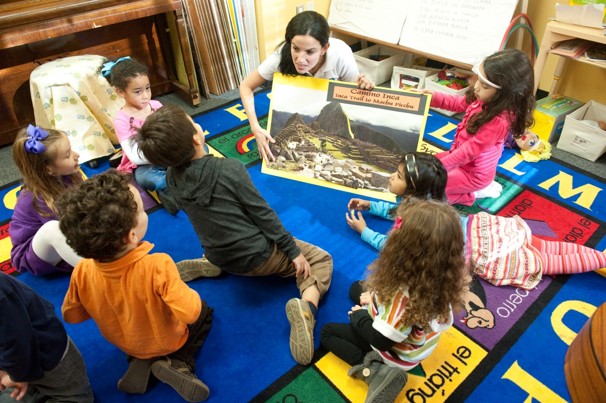For kids, learning to speak Spanish will definitely give them an advantage in the professional and social arena, especially in countries with large Latino populations. For instance, in the United States, there are certain states like California where being bilingual is an important skill in certain fields (such as health care).
According to neurologists, the ideal time for picking up a second language is actually between the preschool and school-age years; at this time, the various connections in the wiring of the brain are still developing and stimulating the complex functions of the language center makes it more sophisticated. This is why children can learn to speak more fluently compared to adult learners.
However, one main difference in language learning between adults and children has a lot to do with the teaching strategy. Because of their immature thought processes, learning to speak Spanish has to remain fun and engaging in order to hold their interest. It is also important to pace the lessons so that they are never too bored or too frustrated. The following are some valuable tips which can make learning to speak Spanish for kids educational and enjoyable:
- Look for signs of learning readiness before starting formal language lessons. Younger children may have problems with sitting at a desk for long periods at a time. In that case, try to avoid conflict (which is counter-productive) by designing the class on a less restrictive note.
- If one-on-one tutoring is not ideal, consider peer learning. Putting together students from different skills group has been known to be a good teaching strategy: the average students could benefit from interacting with the advanced ones, while serving as mentors/team leaders for the rest of the group can enhance the skills of the advanced students.
- Incorporate the child’s personal interests in the lessons. For instance, for a child who loves art, a good choice for vocabulary words would be those which pertain to the Spanish terms for colors (blanca, rosa, azul, verde, etc.).
- Keep the lessons short and frequent. Retention is better for short Spanish lessons which last between 30- 60 minutes, with the children’s age and attention span influencing duration of sessions. Daily lessons, even during the weekends, refresh past concepts and improve recall and fluency.
- Provide as many opportunities for immersion as possible. Institute a Spanish-only time period every day. Expose the child to other aspects of the culture such as the music, the literature, the food, and the history.
Eric Pratum works for the teen development website Empower.me, where teens earn money while learning, getting better grades, and finding things they love.

